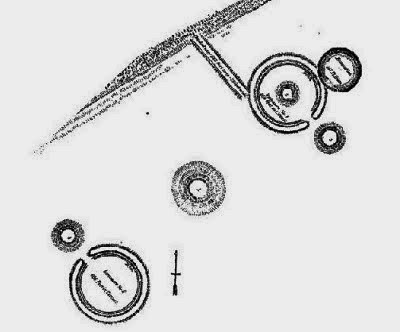Sun Temples (Henges) in Charleston, West Virginia: 666 Feet in Circumference Following the Babylonian Numerology of Gematria
The ancient Babylonians had 36 gods, the most powerful was the Sun God. The 12 houses of the Zodiac each had 3 rooms. These rooms are where the departed spirits would dwell in the afterlife.
The numerology connection of 36 to 666 is that it is a product of the sums of 36.
1 + 2 + 3 + 4 + 5 + 6 + 7 + 8 + 9 + 10 + 11 + 12 + 13 + 14 + 15 + 16 + 17 + 18 + 19 + 20 + 21 + 22 + 23 + 24 + 25 + 26 + 27 + 28 + 29 + 30 + 31 + 32
+ 33 + 34 + 35 + 36 = 666 666 was the Babylonian Gematria number that was designated for the Sun God. In the Ohio Valley, the henges (Sun Temples) were measured with a circumference of either 666 or 660 feet in circumference.
Two Sun Temples or henges were aligned to the Summer and Winter Solstice sunrise.
The two henges measuring 666 have been erased from the landscape by urban sprawl, but the large burial mound that was in middle is still there. In mound was found a giant skeleton.
Annual Report of the Bureau of Ethnology to the Smithsonian Institute, Volume 5, Parts 1883-1884
Giant Skeletons Discovered





.jpg)


